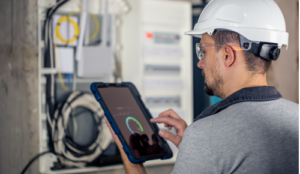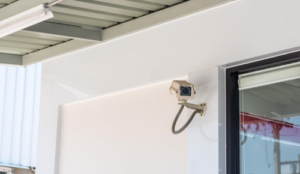Aging infrastructure is a challenge that affects communities worldwide, with outdated facilities and systems straining to meet the demands of modern living. Issues such as crumbling roads and outdated plumbing systems can severely hinder functionality, safety and overall quality of life, which is why upgrading and modernising common areas is essential. In this article, we will explore the benefits of modernising communal spaces and how it can address the challenges posed by aging infrastructure.
What is aging infrastructure?
Aging infrastructure refers to older buildings and any infrastructure used in different industries or areas of life that is deteriorating due to age and extended use, resulting in decreased functionality, efficiency and safety. This includes roads, bridges, water systems, power grids and public buildings. As infrastructure ages, it becomes more prone to wear, corrosion and failure – often requiring increased maintenance or significant rehabilitation to continue serving its purpose. Addressing aging infrastructure is critical for public safety, economic stability, and environmental sustainability and often requires innovative solutions that balance cost, durability and modern standards.
The criteria for aging facilities includes:
- Age relative to design lifespan: Infrastructure is often considered aging if it has exceeded or is approaching the end of its intended design life.
- Physical condition: Visible wear and deterioration, such as cracks, corrosion, or material degradation, are key indicators. Regular inspections and assessments highlight components no longer performing as intended.
- Functional obsolescence: Infrastructure may no longer meet current demands or standards due to increased usage, technological advancements, or changes in regulations. For example, old water treatment plants might struggle to comply with modern environmental guidelines.
- Safety concerns: Systems that pose risks to public safety, such as failing structural components or outdated fire safety measures, are clear signs of aging infrastructure.
- Increased maintenance costs: A system requiring frequent and costly repairs can indicate aging, as upkeep becomes less cost-effective compared to rehabilitation or replacement.
- Capacity constraints: Infrastructure that cannot handle current or projected usage including overcrowded roads, power grids or sewer systems often falls under the aging category.
- Resilience to modern challenges: Aging systems may lack the resilience needed to withstand contemporary challenges like climate change, extreme weather events, or cybersecurity threats in digital infrastructure.
The challenges of aging facilities
The challenges of aging infrastructure are amplified by factors such as population growth, evolving technology needs and climate impacts which place additional strain on already outdated systems. Without regular maintenance, older buildings can deteriorate, leading to accidents, property damage, and even financial ruin. It can also have a negative impact on the environment, harming environmental and sustainability efforts. Incomplete or inaccurate data about aging infrastructure further complicates decision-making, making it harder to plan for repairs or upgrades effectively.
Ways to modernise common areas
When modernising aging facilities, it is essential to do so for common areas to improve both functionality and aesthetics. The following strategies focus on upgrading key elements to upgrade infrastructure whilst meeting community demands.
Rehabilitation and structural reinforcement
Aging infrastructure requires both rehabilitation and structural reinforcement to ensure safety and functionality. Replacing deteriorated components with durable materials improves resilience to environmental stressors, while upgrading foundations ensures structures can handle modern loads and climate challenges. Additionally, using modern technologies like carbon fiber reinforced polymers (CFRPs) can strengthen construction elements such as concrete, steel, and wood, enhancing their durability and extending the lifespan of buildings without adding excessive weight.
Integrate smart technology
Introducing smart technology can help transform aging infrastructure by turning it into a more efficient system. This includes embedding sensors into structures that provide real time data for monitoring stress, vibration and other indicators of wear. The integration of technology can provide ways of detecting potential failures before they occur, offering predictive maintenance. Smart operational systems enhance energy efficiency and automate processes which reduces downtime and operational costs.
Accessibility improvements
Modernising infrastructure for inclusivity involves improving common areas with ramps, lifts and accessible bathrooms. To help people who are visually impaired, tactile surfaces and wider doorways are great ways to ensure compliance with regulations and create universal usability.
Sustainability enhancements
Sustainable upgrades such as solar panels and green roofing helps to address environmental concerns which help to reduce energy costs and carbon footprints.
Cost-effectiveness
Effective modernisation doesn’t have to be expensive. Prioritise upgrades offering the highest return on investment, such as energy efficiency improvements and low-maintenance materials.
Functional and sustainable redesign
Modern and functional layouts prioritise flexibility and adaptability to accommodate evolving needs and creating future proof designs whilst focusing on introducing green materials and renewable energy solutions to reduce the environmental impact.
How can Dependable help?
At Dependable we specialise in providing a range of facilities management services tailored to your specific needs. We can help modernise your common areas through comprehensive facilities management services and ensuring that your aging buildings meet modern standards. Get in touch today to find out how we can help.




